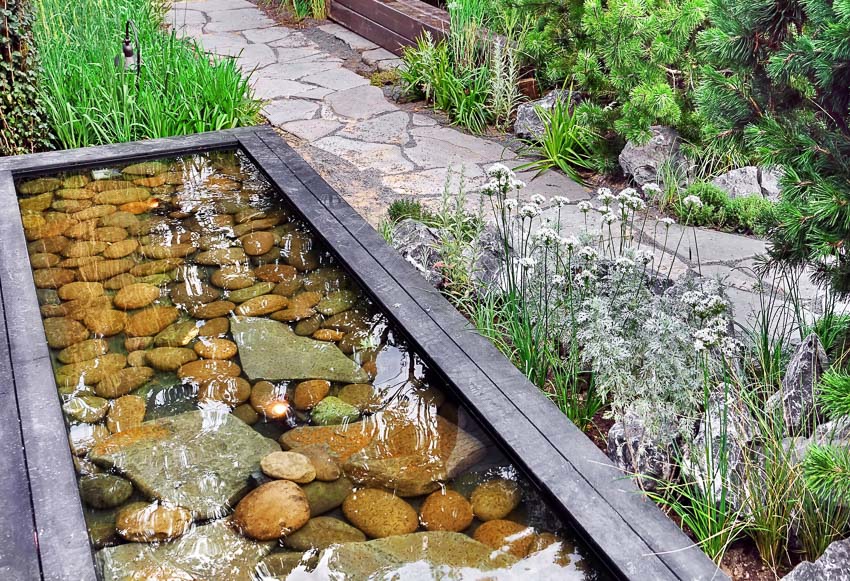Elegant and durable, river rock is a flexible material used for various landscaping projects. Its natural beauty enhances your yard’s curb appeal and requires little maintenance. Learn more about the cost of river rock and the benefits you will experience when you use it in your yard.
What is River Rock and Why You Would Want It
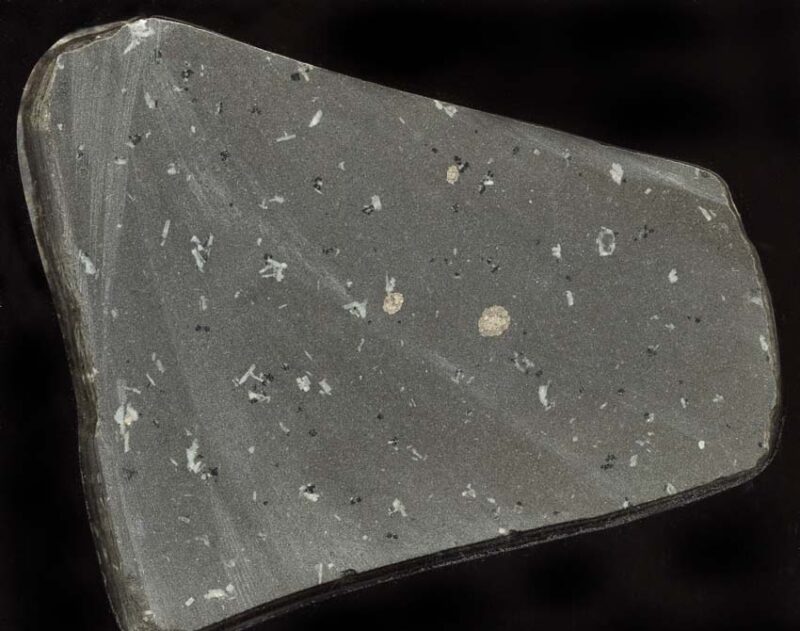
River rock is landscaping rock with smooth, rounded edges. River rock sizes range from small, pea-sized gravel to large boulders.
When water wears smooth any type of rock, you have a river rock, including igneous , sedimentary , and metamorphic variations. Most landscaping river rock comes from ancient river beds, where rocks have been for millions of years.
Benefits of Choosing River Rock for Landscaping
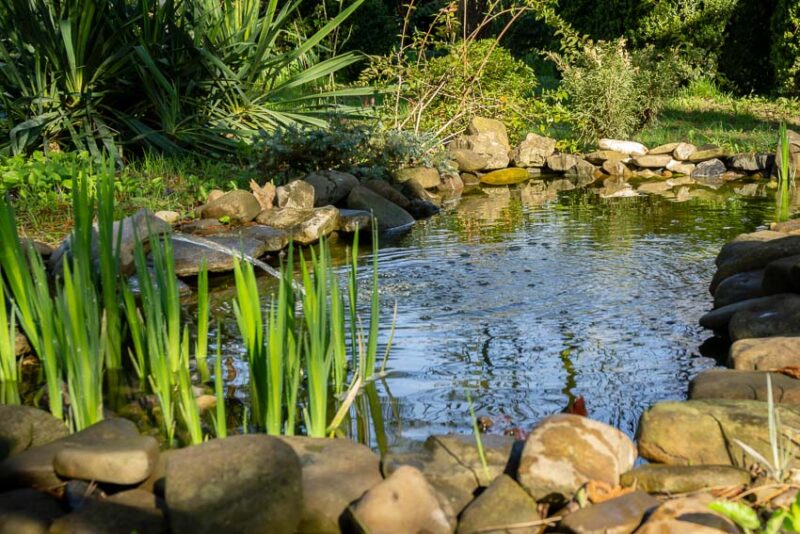
River rock offers several benefits over other types of mulch or ground cover. It’s naturally beautiful, durable, easy to maintain, and budget-friendly.
Natural Beauty
Available in a variety of colors and shapes, river rock is naturally beautiful. You can use it to add interesting shapes and textures to your landscape.

It’s an aesthetically pleasing choice for pathways, edgings, and accents, and it’s the ideal choice for special hardscaping features like dry creek beds, swales, and rain gardens.
Durable and Low-Maintenance
River rock is ancient. Unlike other types of landscaping mulch, which are biodegradable or fade in the sun, river rock is a long-lasting, durable solution.
Once you’ve installed them, river rocks require almost no maintenance. If they get dirty, you can wash them off with a hose, and when leaves fall in areas landscaped with river rocks, you can use a leaf blower to remove them.
Budget Friendly
Although some types of river rock are more expensive, classic river stone is budget-friendly. Since it’s easy to install and doesn’t wear out, you can save money on installation.
All types of river rock offer long-term savings compared to wood mulch, which you frequently have to replenish.
The Cost of River Rock
Depending on several factors, the average cost of river rocks for landscaping is $60 to $180 per ton—the cost of river rock per cubic yard averages between $50 and $150. So let’s answer the question “How much does a yard of river rock cost?”
Factors Influencing the Price of River Rock
Several factors affect the cost of river rock, including installation costs and delivery fees. Learn more about the factors that influence river rock prices.
Project Size
The primary determiner of the cost of river rocks is the size of the project. The more area you cover, the more river rock you need.
The average-sized river rock landscaping project is approximately 500 square feet. A cubic yard covers 100 square feet at a depth of 3 inches, so most projects require at least five cubic yards.
Installation
The larger your project, the longer it will take to install. If you pay a landscaper to install river rock, your project costs will increase accordingly.
Calculate the cost of installation based on an average of $50 to $100 per hour for labor and budget approximately three hours of labor for each cubic yard of rocks.
Delivery
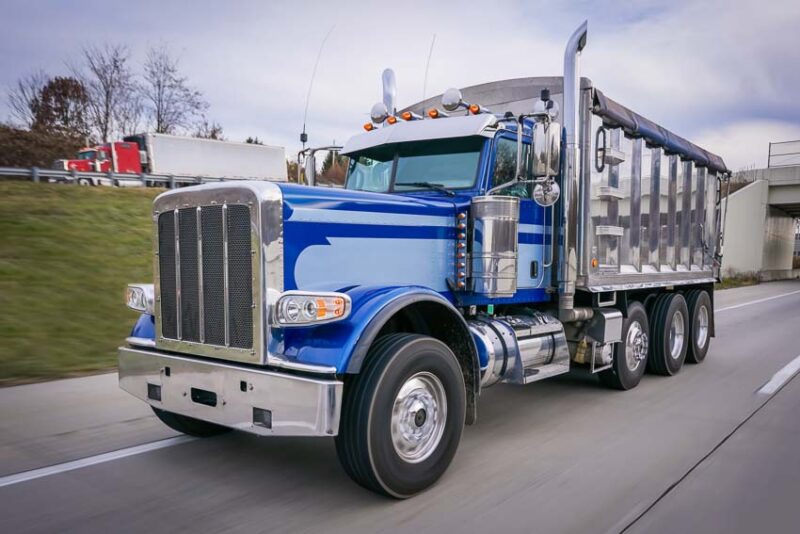
Delivery costs for river rock vary depending on where you live.
Local river rock is much less expensive because delivery costs are lower. If you live near a rock quarry, you will pay much less than if you live in the middle of a suburb.
When comparing prices for river rock, always compare prices that include the delivery cost so you don’t get any surprises.
Size
Smaller pebbles are usually less expensive than larger stones, and as the size of the rock gets bigger, it covers less area. Use the following river rock sizes to determine how much you would need to cover an area using a depth of two inches.
- One yard of river rock 1 inch and smaller covers about 160 square feet
- One yard of river rock 1-2 inches covers about 100 square feet
- One yard of river rock 2-4 inches covers about 80 square feet
One cubic yard of river rock is 2,700 to 3,000 pounds for calculation purposes.
Bulk Prices
There’s a big difference between bagged and bulk prices, so if you’re planning a large project, it pays to research the cost of river rock per ton from landscape suppliers. For small projects, you can purchase bagged river rock online or from home improvement stores.
River Rock Types
There are several types of river rocks, and some are more expensive than others.
The least expensive is pea gravel, about ⅜” in diameter. The most expensive types of river rock are those that come in a single color. Polished river rocks are also more expensive.
Average Prices for Different Types of River Rock
You have many different choices when it comes to landscaping rocks. Explore the various prices of different types of river rock to help you choose what type is right for you.
Classic River Stone
Depending on where you live, you can get classic river stone for about $45 to $130 per ton. River rock varies slightly depending on its region, but most classic river stone is gray, with some colorful rocks in brown, green, blue, and red hues.
Pea Gravel
Pea gravel is just river rock that has been broken and screened into smaller pebbles. It’s usually sized at ⅜” or smaller and costs about $20 to $50 per ton.
Many people use it as filler in pathways with large flagstones, around fire pits, and as edging for flower beds and ponds.
Rainbow River Rock
Readily available in some parts of the country, multicolored river rock is naturally beautiful. It occurs in a rainbow of colors, including shades of green, purple, and rose. The average cost of rainbow river rock is $90 to $190 per ton.
Black or White Polished Pebbles
Pure black or white polished river rock pebbles cost about $650 to $1,300 per ton. Because of the high cost, people often purchase them by the bag and use them sparingly. They cost about $30 for a 40-pound bag of ¼” to ¾” pebbles.
White River Rocks
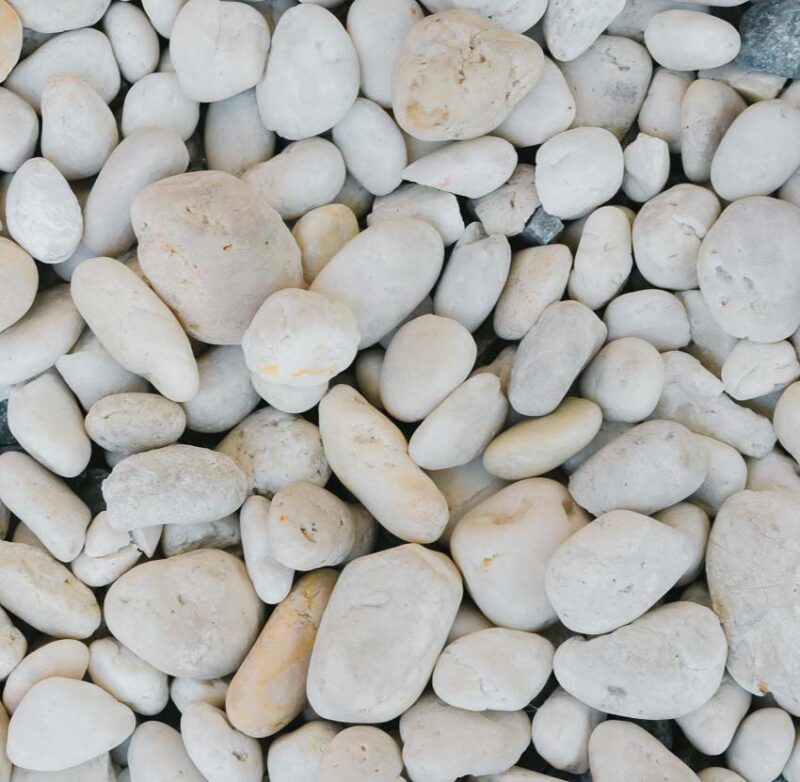
You can also purchase river rocks for landscaping that are various shades of white. White river rocks have a natural appearance, and they come in light shades of white, beige, and tan.
Expect to pay about $115 to $170 per ton, depending on where you live.
Colorado River Rock
These beautiful rounded stones come in a rainbow of colors, including mauve, lavender, plum, rose, and burgundy, with a few rocks of black, terracotta, and green sprinkled in the mix.
Colorado River rocks are an excellent choice for dry creek beds, swales, and rock gardens. Depending on where you live, they cost about $70 to $300 per ton.
Mexican Beach Pebbles
From the beaches of Baja, Mexico, these stones come in various color choices, including grays and blacks, reds and buffs, and mixed colors. Because they are exceptionally smooth, they convey an elegance that other river rocks can’t match. They are highly sought after and cost about $500 to $1,000 per ton.
River Boulders
Boulders are just large river rocks. They are used as focal points, barriers, fire pit seats, and retaining walls. They cost about $100 to $600 per ton.
Depending on their size, you may need to hire a professional to install them.
Average Prices for Other Types of Landscape Rocks
River rocks are just one type of landscaping rock, and you have many other choices. It’s important to consider the following types of rocks, which usually cost less and may be better suited for your purpose.
To achieve dramatic results, you can also combine river rocks with other types of rocks in landscaping projects.
| Type of landscaping rock | Price per ton |
| Lava rock (volcanic rock) | $120 to $220 |
| Decomposed granite | $35 to $75 |
| Crushed granite | $50 to $100 |
| Limestone rock (bull rock) | $70 to $120 |
| Crushed limestone | $20 to $30 |
| Riprap (for erosion control) | $40 to $80 |
Always check delivery fees and include them in the overall cost of landscaping rock. Different types of rock will be more readily available in your region, so it’s best to choose a local rock source.
Measuring the Expense of River Rock
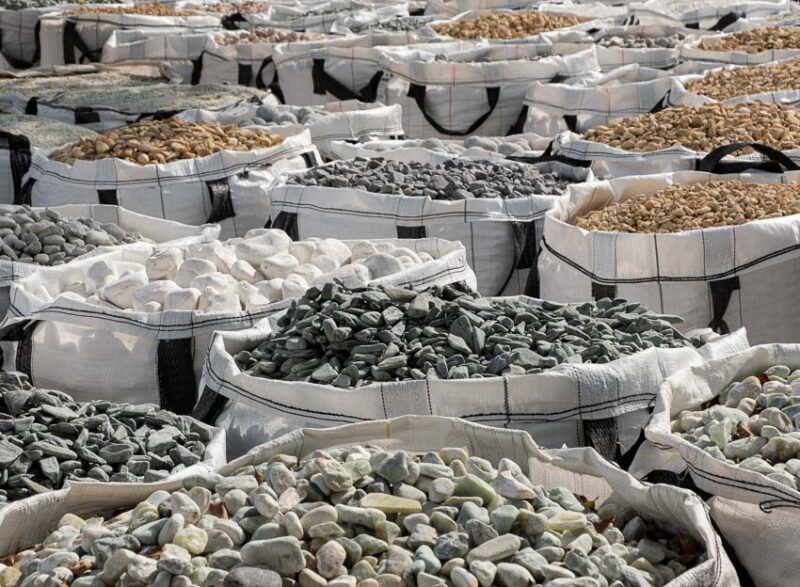
Understanding how to measure the cost of river rock will help you budget your landscaping project and compare prices. Discover how river rock is sold and measured, and learn more about the difference in prices between bulk and bagged river rock.
How River Rock is Sold and Measured
River rock is sold by both weight and volume, and it’s measured in tons and cubic yards. Approximately 1.4 tons of rock are in a cubic yard or 2,700 pounds. To convert cubic yards to tons, multiply the cubic yards by 1.4.
- Cubic yards × 1.4 = Tons
Understanding Bulk Pricing vs. Bagged River Rock
Bagged landscaping products are also sold and measured by weight and volume. Bagged river rocks are often sold in 0.5 cubic feet bags that weigh 30 to 40 pounds. There are 27 cubic feet in a cubic yard, so it would take 54 of them to make one cubic yard.
If a 0.5 cubic foot bag of river rocks costs $20, that means it costs $1,080 per cubic yard. To convert that to tons, multiply this amount by 1.4 from the formula above, or $1,512 per ton. As you can see, bagged river rocks cost much more than bulk pricing.
Purchase Considerations
Before purchasing river rocks, consider all your options. You have a lot of choices of landscaping rocks, and you should be sure that you’re choosing the right type of rocks for your project.
Choosing the Right Type for Your Needs
Consider the following factors when choosing landscaping rocks and determining how much river rock you need.
- Size–smaller rocks cover more area
- Color–choose a color that will complement the rest of your property
- Shape–choose from round, jagged, square, or flat rocks
- Texture–even slight differences in smoothness can be noticeable
- Finish–some rocks are polished, which adds to the cost
Budgeting for Your River Rock Project
River rocks vary widely in price depending on their color, smoothness, and finish. Calculate your needed material and find the best rock for your budget. You can substitute a lower-priced material without sacrificing the overall appearance of your project.
Common Questions about the Cost of River Rock
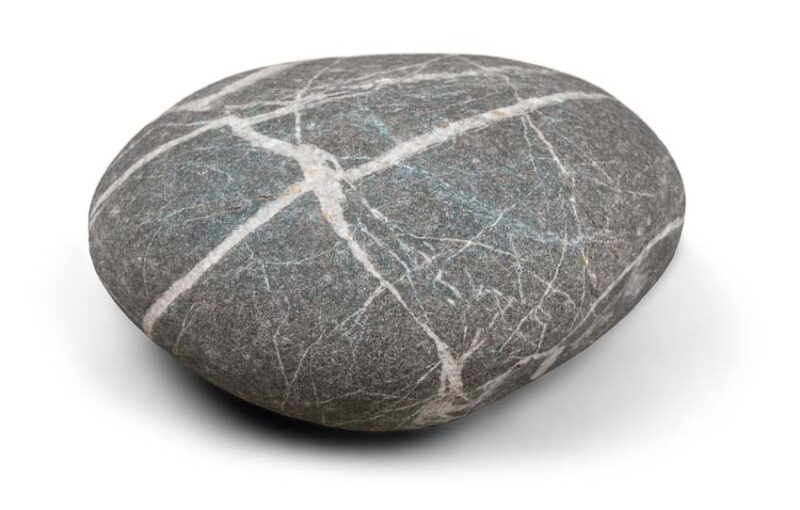
Q1: How Much Do I Need for My Project?
The easiest way to calculate how many tons of river rock you need is to find the total square feet of area you need to cover. River rock covers about 50 square feet per ton at a depth of 3 to 6 inches, so simply divide your square footage by 50 to determine the required number of tons.
Q2: Can I Save Money by Buying River Rock in Bulk?
If you need more than a few cubic feet of river rock, you can save a lot of money by purchasing it in bulk. Figuring how much a ton of river rock costs can help to get an idea of how much river rock is in a cubic yard.
It helps to know that a half yard will fit in an average-sized bathtub. This will help you know how much it is for river rock.
Q3: What Other Costs Should I Consider When Buying?
You should consider the delivery and installation costs when purchasing river rock. Delivery fees can surprise you if you don’t figure them into the cost of the product. Labor costs are also significant if you hire someone to install it.
Q4: Where Can I Buy River Rock?
Landscape supply companies, building material outlets, and sand and gravel pits are all places that sell river rock. You can find bagged river rock for sale online and at many home improvement stores.
Q5: How Does the Cost of River Rock Compare to Other Landscaping Materials?
The initial cost of river rock is about two to three times higher than other types of landscaping materials, but since you don’t need to replace it, you can save money in just a few years.

